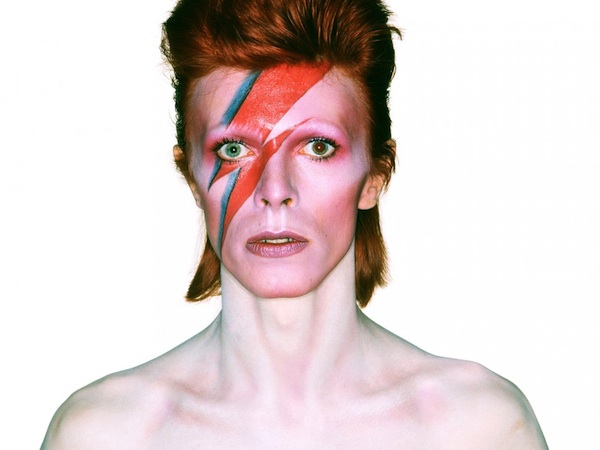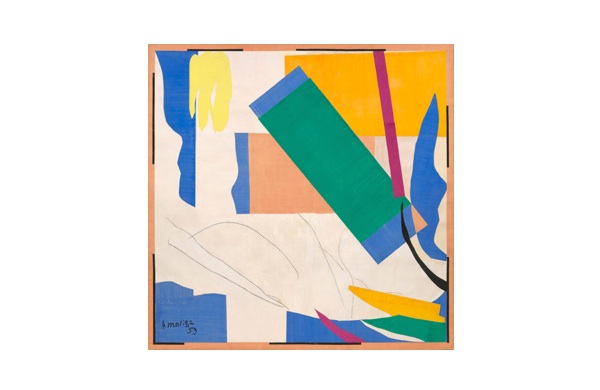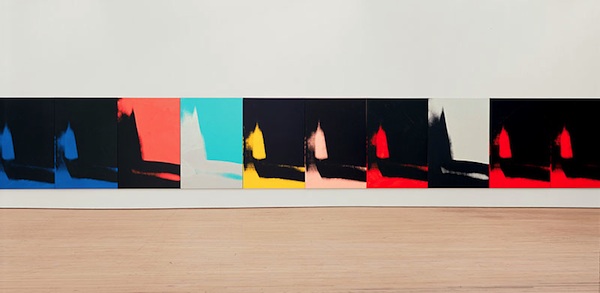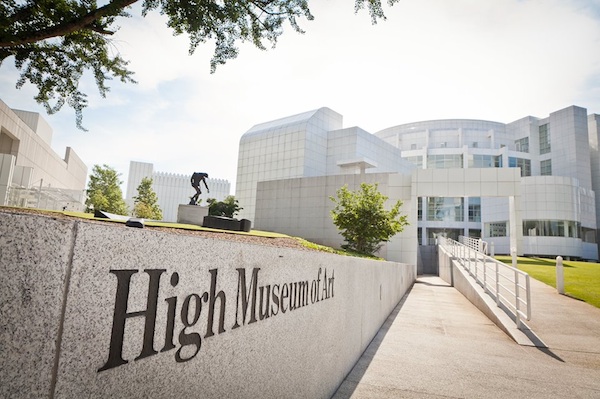 As summer’s end approaches, America’s top museums and art galleries are busy preparing for their final exhibitions of the calendar year. Read through our list of five you definitely shouldn’t miss, and remember to check Groupon for deals on museums in your city.
David Bowie Is at Museum of Contemporary Art
Chicago | September 23, 2014, to January 4, 2015
As summer’s end approaches, America’s top museums and art galleries are busy preparing for their final exhibitions of the calendar year. Read through our list of five you definitely shouldn’t miss, and remember to check Groupon for deals on museums in your city.
David Bowie Is at Museum of Contemporary Art
Chicago | September 23, 2014, to January 4, 2015
 Photo: Brian Duffy © Duffy Archive & The David Bowie Archive
Photo: Brian Duffy © Duffy Archive & The David Bowie Archive
David Bowie has cycled through so many identities as an artist and performer, that the open-ended title of this exhibition seems elusive, at best. With that said,
David Bowie Is is unlikely to disappoint as the first-ever Bowie retrospective. The exhibition brings together more than 400 artifacts from the David Bowie archive, including handwritten lyrics, photography, and rare performance material dating back to the 1960s. But we’re most excited about the more than 60 costumes, which include the Ziggy Stardust bodysuits and the Union Jack coat designed by Bowie and Alexander McQueen for the
Earthling album cover.
The City Lost and Found: Capturing New York, Chicago, and Los Angeles, 1960–1980 at Art Institute of Chicago
Chicago |
October 26, 2014, to January 11, 2015
 Kenneth Josephson. "Chicago," 1969. Gift of the School of the Art Institute of Chicago.
Kenneth Josephson. "Chicago," 1969. Gift of the School of the Art Institute of Chicago.
In the 1960s and 1970s, the American city was transformed by elements both physical (a sprawling new highway infrastructure) and social (a hypercharged political climate). Nowhere was this more apparent than in the country’s three largest cities, New York, Chicago, and Los Angeles. The Art Institute’s latest photography exhibition,
The City Lost and Found: Capturing New York, Chicago, and Los Angeles, 1960–1980, explores this historical moment with images that offer a close-up view of some of the more drastic changes. Perhaps the best example of this is Bruce Davidson’s East 100th Street collection, a two-year study of a single block in Harlem, New York.
Henri Matisse: The Cut-Outs at Museum of Modern Art
New York City |
October 12, 2014, to February 8, 2015
 Henri Matisse (French, 1869–1954). "Memory of Oceania." Nice-Cimiez, Hôtel Régina, summer 1952–early 1953. The Museum of Modern Art, New York. Mrs. Simon Guggenheim Fund. © 2014 Succession H. Matisse, Paris/Artists Rights Society (ARS), New York.
Henri Matisse (French, 1869–1954). "Memory of Oceania." Nice-Cimiez, Hôtel Régina, summer 1952–early 1953. The Museum of Modern Art, New York. Mrs. Simon Guggenheim Fund. © 2014 Succession H. Matisse, Paris/Artists Rights Society (ARS), New York.
French artist Henri Matisse began his career as an important leader of the Fauvist movement, which emphasized bold colors and wild brushwork. But by the 1940s, he had all but abandoned oil on canvas, turning instead to cut paper as his primary medium. The MoMa’s
Henri Matisse: The Cut-Outs brings together approximately 100 cut-outs of various sizes along with related media such as drawings, prints, and stained glass. We’re most excited about the newly conserved cut-out
The Swimming Pool (1952), a monumental piece that was composed specifically for Matisse’s dining room.
Andy Warhol: Shadows at Museum of Contemporary Art
Los Angeles |
September 20, 2014, to February 2, 2015
 Andy Warhol, "Shadows" (1978–79). Dia Art Foundation. © 2014 The Andy Warhol Foundation for the Visual Arts, Inc./Artists Rights Society (ARS), New York. Photo: Bill Jacobson Studio, New York.
Andy Warhol, "Shadows" (1978–79). Dia Art Foundation. © 2014 The Andy Warhol Foundation for the Visual Arts, Inc./Artists Rights Society (ARS), New York. Photo: Bill Jacobson Studio, New York.
Andy Warhol certainly had a thing for sameness, splaying images of celebrities and commodities across canvases to create an almost numbing sense of repetition. But like most visual artists, Warhol could not resist the temptation to explore color and form.
Andy Warhol: Shadows foregoes the artist’s usual pop-culture subjects in favor of stark, abstract images of shadows captured in his famous New York City studio, The Factory. The effect of seeing these 102 silkscreened works together (as they were intended) is strange and even haunting, though Warhol himself cheekily referred to the series as “disco decor.”
Cezanne and the Modern: Masterpieces of European Art from the Pearlman Collection at High Museum of Art
Atlanta |
October 25, 2014, to January 11, 2015
 Photo Courtesy of the High Museum of Art
Photo Courtesy of the High Museum of Art
The French artist Paul Cézanne stands somewhere between impressionism and modernism, which is why it’s so fitting that 24 of his paintings serve as the centerpiece of the High’s latest exhibition,
Cézanne and the Modern: Masterpieces of European Art from the Pearlman Collection. Cézanne’s works join those of artists such as Van Gogh, Gauguin, and Degas, all of whom similarly helped to usher in a new era of European modernism. Especially impressive here is the collection of Cézanne’s watercolors, which ranks among the greatest outside France.








 Photo: Brian Duffy © Duffy Archive & The David Bowie Archive
David Bowie has cycled through so many identities as an artist and performer, that the open-ended title of this exhibition seems elusive, at best. With that said,
Photo: Brian Duffy © Duffy Archive & The David Bowie Archive
David Bowie has cycled through so many identities as an artist and performer, that the open-ended title of this exhibition seems elusive, at best. With that said,  Kenneth Josephson. "Chicago," 1969. Gift of the School of the Art Institute of Chicago.
In the 1960s and 1970s, the American city was transformed by elements both physical (a sprawling new highway infrastructure) and social (a hypercharged political climate). Nowhere was this more apparent than in the country’s three largest cities, New York, Chicago, and Los Angeles. The Art Institute’s latest photography exhibition,
Kenneth Josephson. "Chicago," 1969. Gift of the School of the Art Institute of Chicago.
In the 1960s and 1970s, the American city was transformed by elements both physical (a sprawling new highway infrastructure) and social (a hypercharged political climate). Nowhere was this more apparent than in the country’s three largest cities, New York, Chicago, and Los Angeles. The Art Institute’s latest photography exhibition,  Henri Matisse (French, 1869–1954). "Memory of Oceania." Nice-Cimiez, Hôtel Régina, summer 1952–early 1953. The Museum of Modern Art, New York. Mrs. Simon Guggenheim Fund. © 2014 Succession H. Matisse, Paris/Artists Rights Society (ARS), New York.
French artist Henri Matisse began his career as an important leader of the Fauvist movement, which emphasized bold colors and wild brushwork. But by the 1940s, he had all but abandoned oil on canvas, turning instead to cut paper as his primary medium. The MoMa’s
Henri Matisse (French, 1869–1954). "Memory of Oceania." Nice-Cimiez, Hôtel Régina, summer 1952–early 1953. The Museum of Modern Art, New York. Mrs. Simon Guggenheim Fund. © 2014 Succession H. Matisse, Paris/Artists Rights Society (ARS), New York.
French artist Henri Matisse began his career as an important leader of the Fauvist movement, which emphasized bold colors and wild brushwork. But by the 1940s, he had all but abandoned oil on canvas, turning instead to cut paper as his primary medium. The MoMa’s  Andy Warhol, "Shadows" (1978–79). Dia Art Foundation. © 2014 The Andy Warhol Foundation for the Visual Arts, Inc./Artists Rights Society (ARS), New York. Photo: Bill Jacobson Studio, New York.
Andy Warhol certainly had a thing for sameness, splaying images of celebrities and commodities across canvases to create an almost numbing sense of repetition. But like most visual artists, Warhol could not resist the temptation to explore color and form.
Andy Warhol, "Shadows" (1978–79). Dia Art Foundation. © 2014 The Andy Warhol Foundation for the Visual Arts, Inc./Artists Rights Society (ARS), New York. Photo: Bill Jacobson Studio, New York.
Andy Warhol certainly had a thing for sameness, splaying images of celebrities and commodities across canvases to create an almost numbing sense of repetition. But like most visual artists, Warhol could not resist the temptation to explore color and form.  Photo Courtesy of the High Museum of Art
The French artist Paul Cézanne stands somewhere between impressionism and modernism, which is why it’s so fitting that 24 of his paintings serve as the centerpiece of the High’s latest exhibition,
Photo Courtesy of the High Museum of Art
The French artist Paul Cézanne stands somewhere between impressionism and modernism, which is why it’s so fitting that 24 of his paintings serve as the centerpiece of the High’s latest exhibition, 